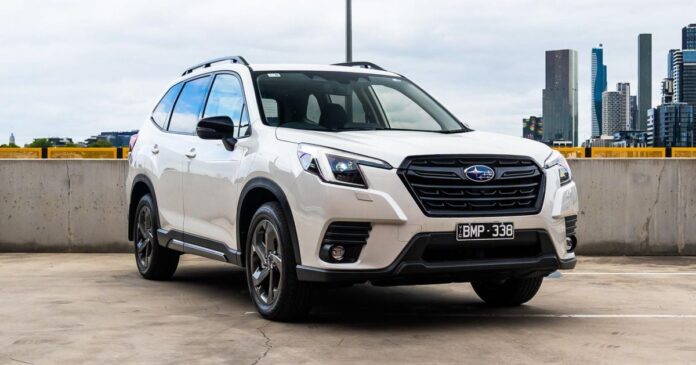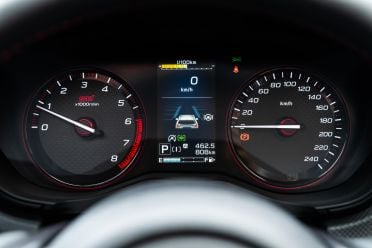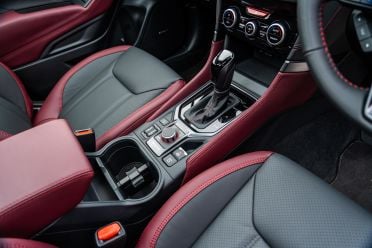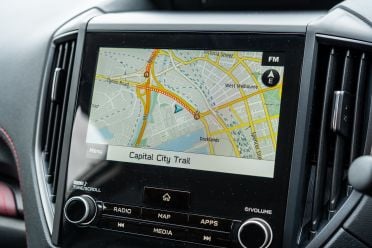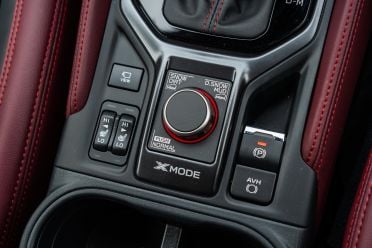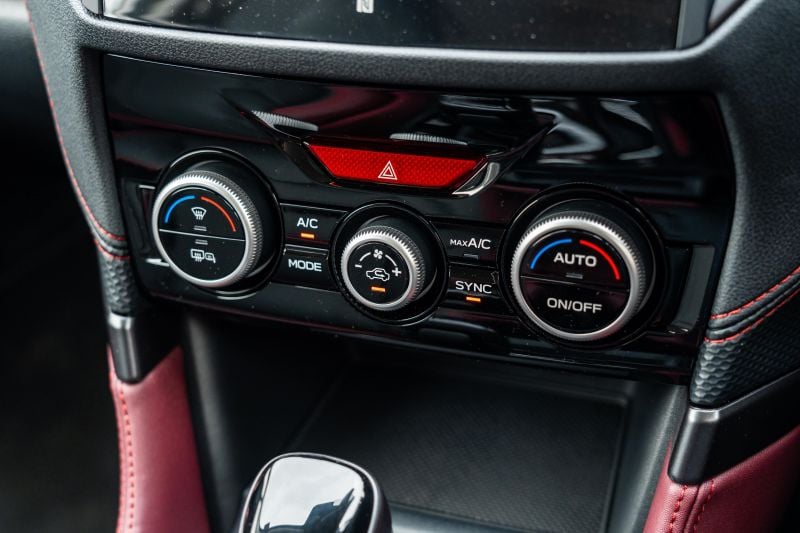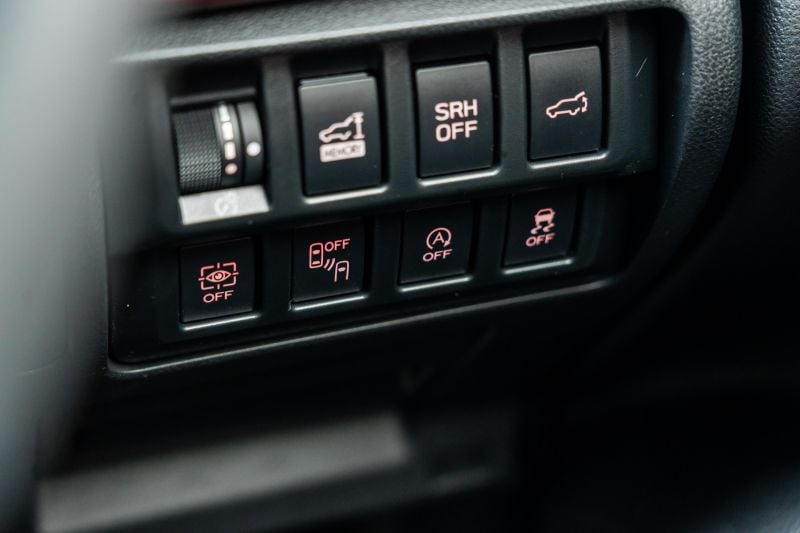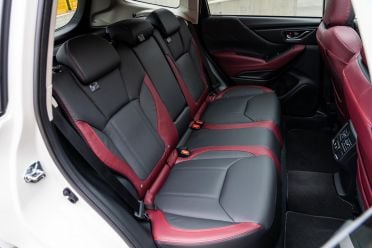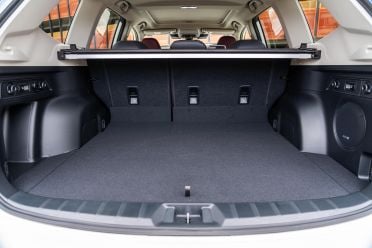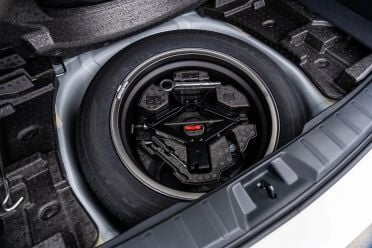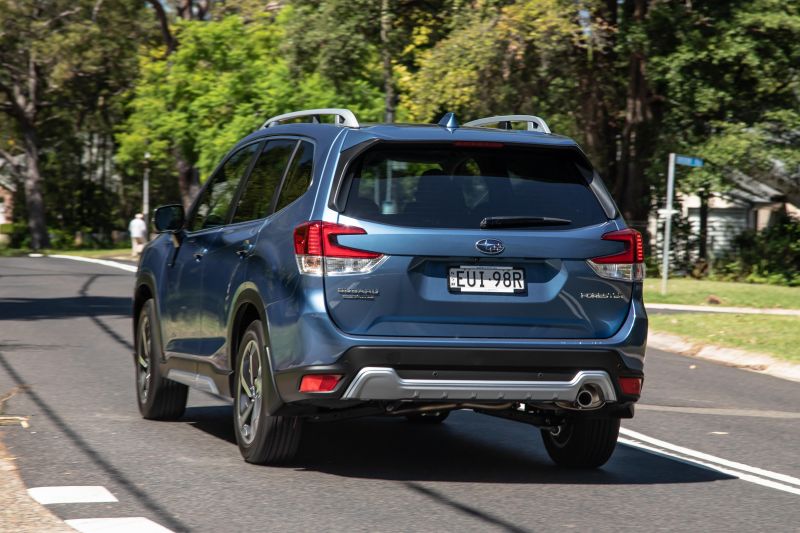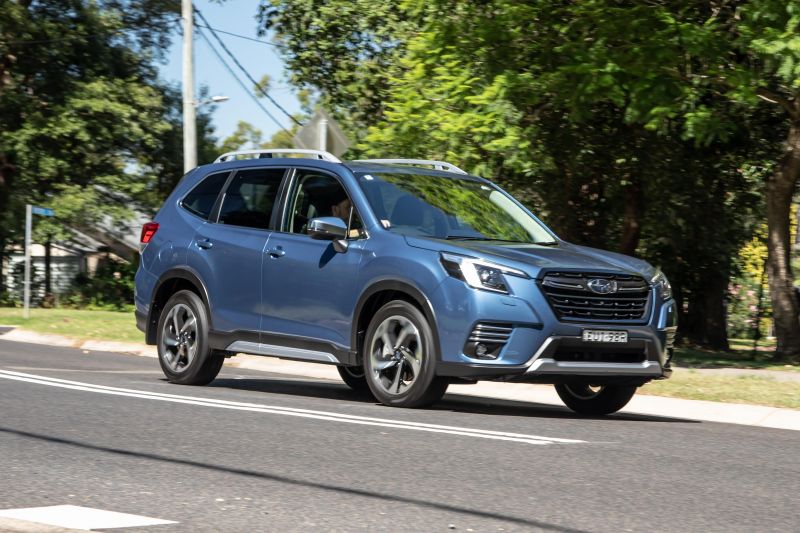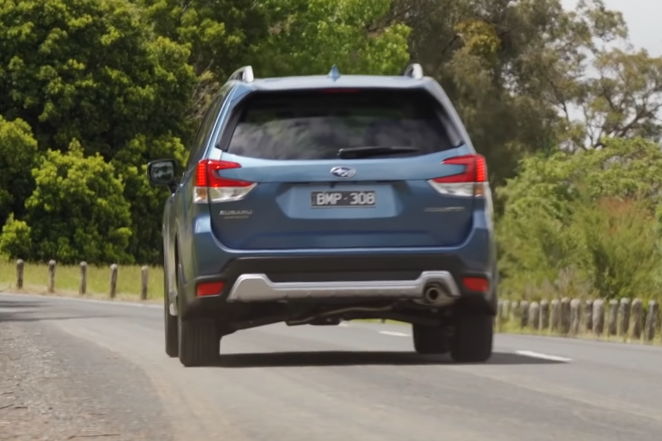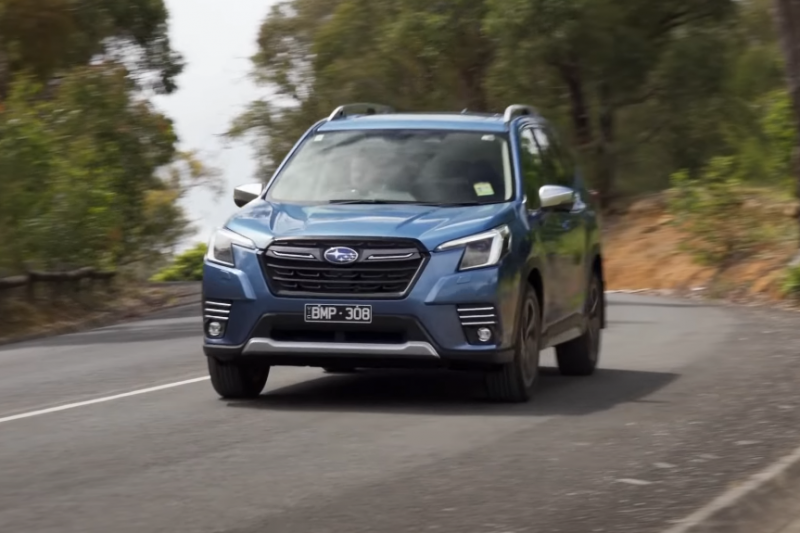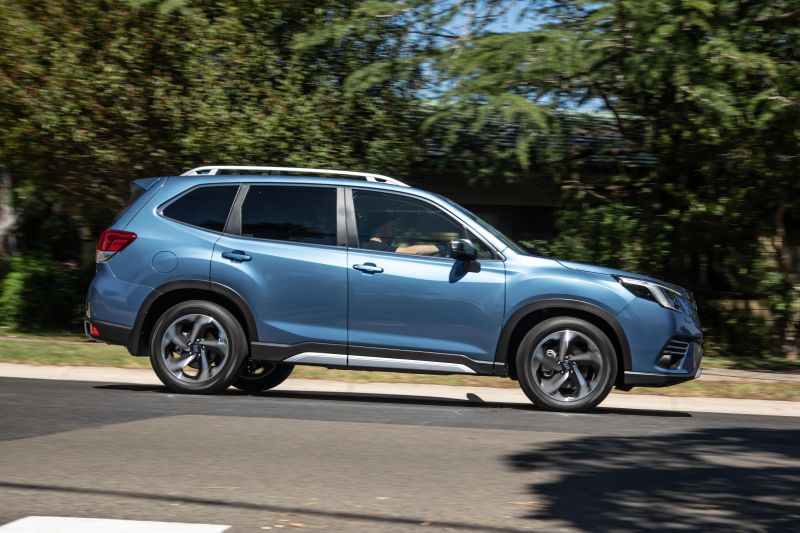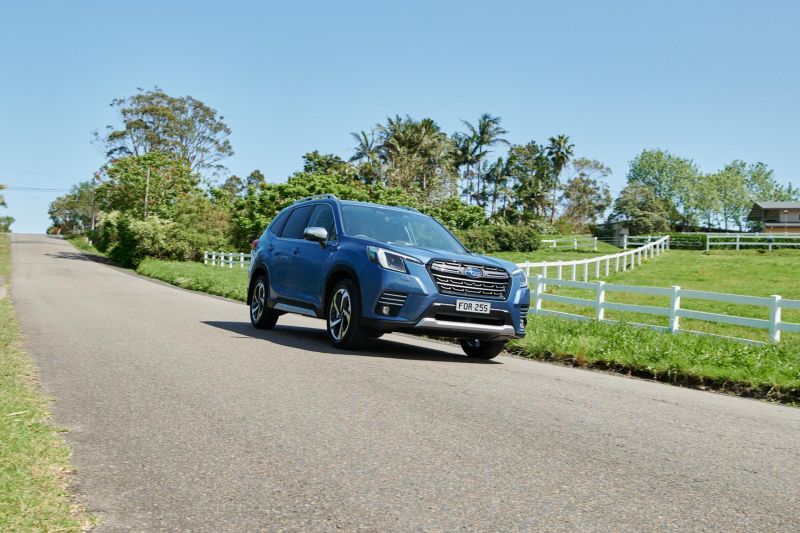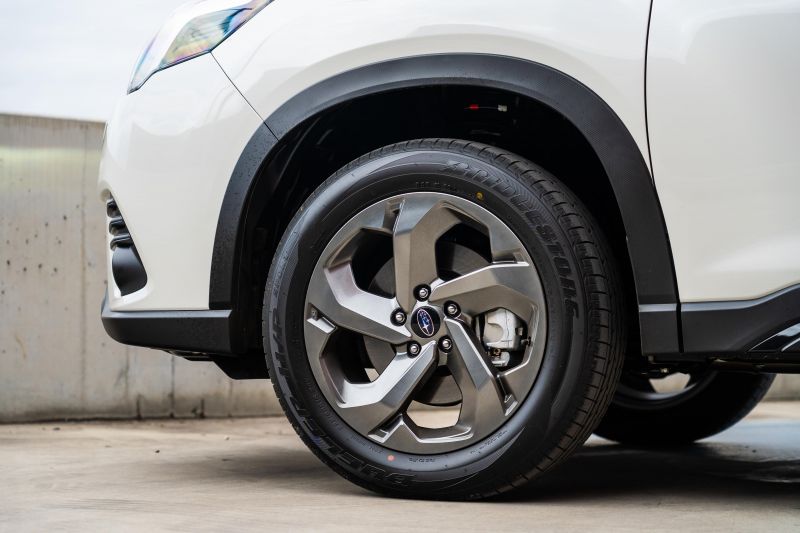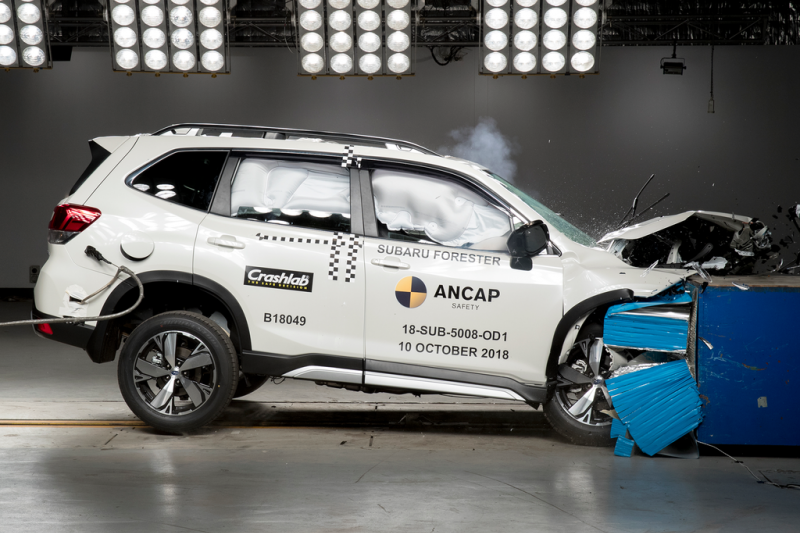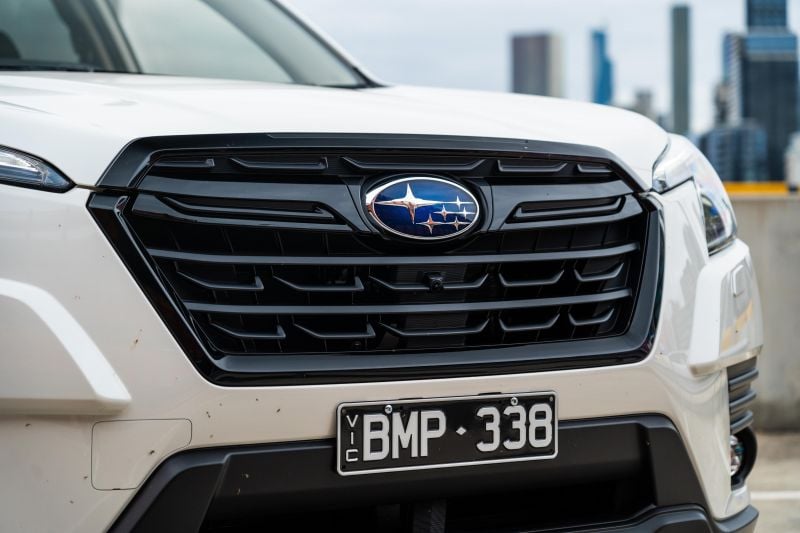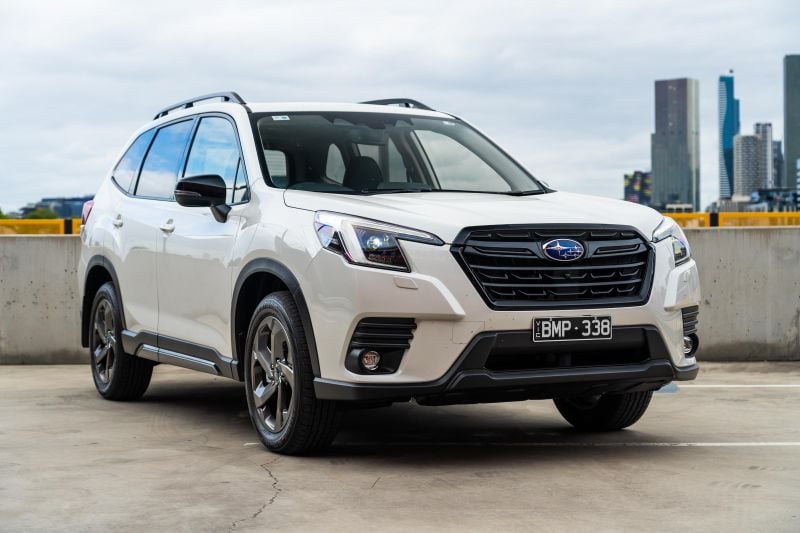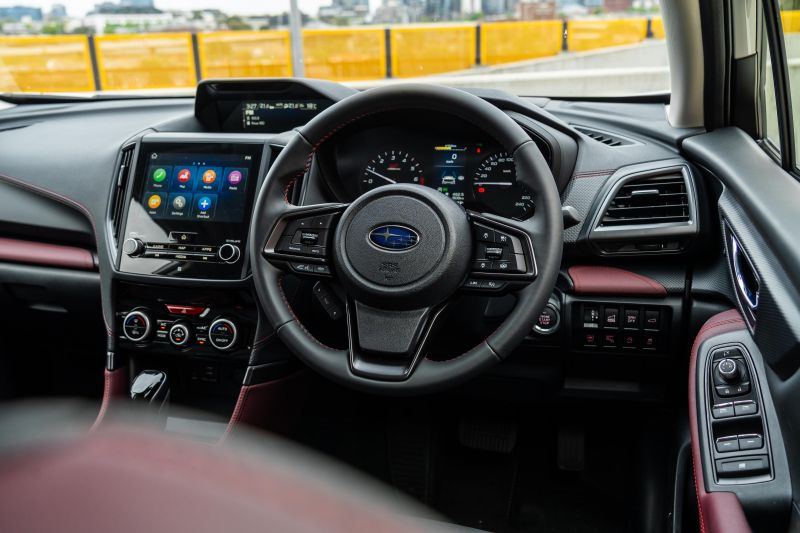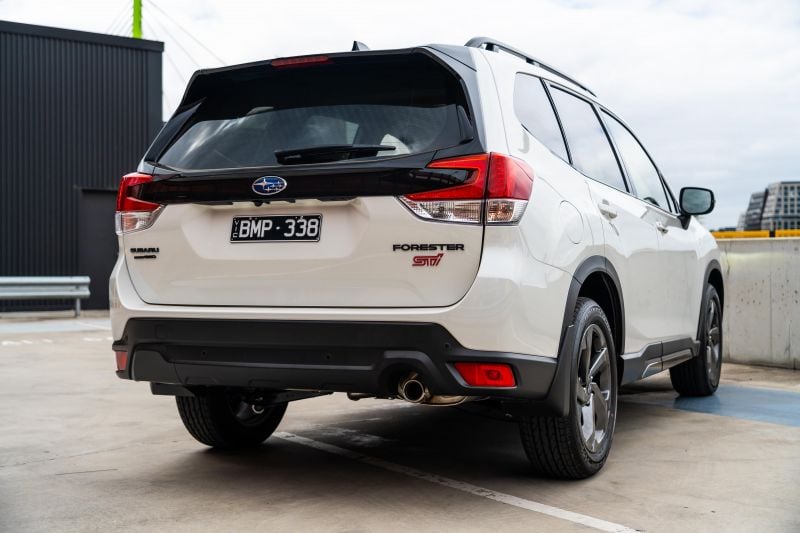Subaru was once an exciting brand, but it seems to have lost its way in recent years.
Think back to the 2000s, when the Japanese brand was making waves with its supercar-killing WRX sports cars and hotted-up Forester SUVs – all with turbocharged variations of that iconic boxer engine underneath the bonnet – after the original 1992 Impreza WRX took the World Rally Championship by storm the previous decade.
Back then Subaru cars were full of character, and that continued into the 2010s with new WRX iterations and the arrival of the unique BRZ coupe – but the Japanese brand’s excitement seemed to gradually diminish as the decade progressed.
Something that was a constant in some of Subaru’s most important models was its in-house tuning division, Subaru Tecnica International (STI). Its cherry blossom-red logos are still iconic as a result, and it was best-known for its involvement in global motorsport and developing four generations of the hotted-up WRX STI.
But STI die-hards were shocked to learn that model would cease production after 2021, even if Subaru suggested the hallowed badge may reappear on an EV one day, and so you can imagine their interest around the return of an internal-combustion STI model in 2024.
WATCH: Paul’s video review of the 2022 Subaru Forester 2.5i-S
The only problem is that it may not be what they were hoping for.
If you take the Forester – Subaru Australia’s current top-seller – and change out the wheels, add black and Bordeaux two-tone upholstery, and bolt in some sportier suspension, you get this: the Subaru Forester STI Sport.
It’s a full-time variant in Japan, but over there it adds a turbocharged engine with considerably more torque. Here, it’s a special-edition model, with its performance mods limited to only STI-tuned dampers.
That means it’s much more like a cosmetic pack for the top-spec 2.5i-S on which it’s based, rather than a rebirth of the STI brand. Is it the “collectors’ item” Subaru Australia says it is, or just a missed opportunity?
How does the Subaru Forester compare?
View a detailed breakdown of the Subaru Forester against similarly sized vehicles.

Subaru
Forester
The 2025 Subaru Forester STI Sport is based on the most expensive non-hybrid Forester grade, the 2.5i-S. It commands a price premium of $1500 over that variant, but still slides in under the range-topping Hybrid S.
| Model | Price before on-road costs |
|---|---|
| 2025 Subaru Forester 2.5i | $38,690 |
| 2025 Subaru Forester 2.5i-L | $41,090 |
| 2025 Subaru Forester 2.5i Premium | $43,890 |
| 2025 Subaru Forester Hybrid L | $44,090 |
| 2025 Subaru Forester 2.5i Sport | $45,640 |
| 2025 Subaru Forester 2.5i-S | $47,140 |
| 2025 Subaru Forester STI Sport | $48,640 |
| 2025 Subaru Forester Hybrid S | $50,140 |
To see how the Subaru Forester stacks up against its rivals, use our comparison tool.
The latest Forester’s interior is already pleasant, and it’s safe to say the STI Sport is a strong improvement.
Its headline feature is the black and Bordeaux two-tone upholstery, which graces the seats, centre console, and armrests. It may be subtle, but the red pops in the sunlight and creates a much more premium feel.
The changes tie in well with the standard Forester dashboard in particular, which is covered entirely in soft-touch material that’s broken up with multiple different textures and finishes.
Red stitching, which ties in with the STI theme, has been added to the seats and steering wheel for some extra spice. And that steering wheel is a highlight here; its small diameter is reminiscent of a sports car, and it’s pleasant to hold on account of its leather finish.
Those seats aren’t just a pretty face either, as Subaru has upholstered them in premium Nappa leather. That means they’re comfortable on long drives, while still maintaining an improved appearance over standard cloth. Add heating and power adjustment, and you’re just about set for front-row comfort.
The premium STI façade begins to fall apart the further up you look, however. It’s disappointing Subaru has elected for a cheaper-looking grey headliner, because the rest of the cabin is either entirely black or dark red.
We think that takes away from the otherwise upmarket special-edition interior, and it’s hard to see why the brand couldn’t swap it out for a black headliner just this once.
Previous STI models were never intended to be luxurious cars, and so grey headliners aren’t anything new here. There’s a strange inconsistency here though, given the current non-STI WRX has a black headliner itself.
Still, the rest of the interior is undeniably nice. If you were basing the STI Sport’s worth as a higher-end Forester on interior appearance alone, it would present a strong case.
As it is still a Forester, there are some familiar elements to live with. One is the sheer number of buttons, switches, and dials, which almost feel overwhelming when you first get behind the wheel.
A benefit is it feels like Subaru is giving the driver complete physical control over everything the car does. Given this generation of Forester is now heading towards the end of its lifespan, the reliance on buttons is a refreshing diversion from most other modern screen-heavy setups.
Want to adjust the drive mode? Use the big dial in the middle. Jump between infotainment menus? Push the buttons below the screen. Toggle idle stop/start? Hit one of the eight buttons to the right of the steering wheel.
It’s a lot to take in at first, but once you’re used to everything it becomes very intuitive. I found that after a couple of hours with the car, I knew where everything was and what it all did.
That may be Subaru familiarity on my part, but physical buttons make it much less intimidating for someone coming from an older car.
There are more buttons to be found on the steering wheel, too. These ones are much more like what you find in other cars, as they’re there for functions like volume and tuning, as well as to operate the driver assist systems.
They’re all large and clearly marked, and they function with a satisfying tactile feel. In the middle of the wheel is the large circular airbag pad, which when pressed sounds the boat horn Subaru seems to have fitted to the front of the car.
Unfortunately, there’s no STI influence to the interior beyond the colours and the debossed logos on the head restraints, though there’s something traditionally sporty about the instrument cluster.
Subaru’s older-generation influence shines through here, as it’s dominated by two large gauges and a small centre screen. Call it old-fashioned, but we like the simple old-school setup going on here.
You’ll notice the STI logo etched onto the face of the tachometer, which is a nice touch. We’ve seen the same thing on actual STI models before, so it’s easy to slip back to the land of the WRX STI for a brief moment.
Generally though, the instrument cluster is a high-quality, nice-looking unit. In the middle is that small information screen, which shows plenty of important information that can be cycled through using the switches attached to the bottom of the steering wheel.
The various menus include panels for things like fuel and trip details, or speed and traffic sign information, among others. It also displays the drive status in regards to Subaru’s SI-Drive, which can be toggled by a button on the wheel.
All the information you could ever want is available to you, and it takes but a moment to figure out how to find it after few moments of poking and prodding.
In the middle is a secondary information screen and the 8.0-inch infotainment display, which is still the old-generation unit and that means it’s smaller and still includes an array of buttons below for the various infotainment shortcuts.
That’s a good thing because not everyone is a fan of the huge vertical displays seen in new Subarus, and this application is quite clean overall.
It also means the Apple CarPlay interface takes up the whole screen instead of a smaller portion like on those newer models.
A downside of the older system is that smartphone mirroring is still only wired. That’s not a deal-breaker, though, and it means you get the security of a hard connection. The screen functioned flawlessly for us as a result, though it was a little laggy when swiping.
That smaller screen above is typical of Subaru, and it has loads of useful information relating to things like driver assistance and off-roading. It’s navigable using the ‘info’ button on the steering wheel.
Below is the climate control system, which is a more traditional setup with no touchscreen buttons to be seen. The buttons are finished in gloss-black plastic, but along with the three dials they’re sturdy and easy to operate.
There’s no display here to show you what you’re adjusting, but making any change on the climate control panel will open a dedicated menu on the secondary screen up top.
It can be hard to notice at first given how far apart the interface and the screen are, but we like the way Subaru has set things up here.
Storage and connectivity up front is good, but it’s noticeably beginning to lag behind. There are cubbies and slots for things like phones, but they’re too small to comfortably fit one.
There are two central cupholders and bottle holders in the doors, which are comfortably sized. Opening the Bordeaux-covered centre console lid reveals a deep storage box with a felt floor, and there’s a removable tray on top with coin holders.
Phone connectivity is via either one of the two USB-A ports or AUX jack up front, while charging is available via either the other port or the 12V outlet nearby. There’s no wireless charger here, and no hidden CD player as in the Outback Touring either.
Additionally, there’s a glovebox on the passenger side and a sunglasses holder on the roof.
Moving to the back reveals loads of space. The rear doors are large and open wide, which means it’s easy to climb inside even if it is relatively high above the ground.
Once in, you’ll find there’s plenty of legroom and headroom on account of the tall, boxy proportions. There’s more of that Nappa leather back here too, as well as air vents on the back of the centre console.
Creature comforts back here include two USB-A ports below the air vents and cupholders on the fold-down centre armrest, and like the front of the cabin it’s clean and presents well.
The front seatbacks are adorned with multiple tiered map pockets, while there are bottle holders in the doors to boot. Behind the large sunroof is also an additional dome light, while you’ll find two ISOFIX child seat anchor points and a total of three anchors across the rear row.
Storage space in the boot of the Forester is impressive. There’s a completely flat floor and high ceiling to make use of, the latter of which isn’t compromised by any sloping rooflines.
Better yet, Subaru has kept a full-size spare wheel in the Forester, under the floor of the boot. You’ll also find an additional 12V outlet on the left, as well as a subwoofer on the right.
To make it easier to access its full cargo capacity, the Forester also includes levers on either side of the luggage space that fold the rear seats down in a flash. The only downside is you’ll still have to go around to the side of the car to put the seats back in place.
Access is made as easy as possible thanks to the powered tailgate, which can also be opened and closed using a dedicated button to the right of the steering wheel.
It’s a very flexible package, but that’s what the Forester already offered. If you were waiting for the main course, this is unfortunately where most of the STI flavour ends.
| Dimensions | Subaru Forester STI Sport |
|---|---|
| Length | 4640mm |
| Width | 1815mm |
| Height | 1730mm |
| Wheelbase | 2670mm |
| Cargo capacity | 498L (rear seats up) 1740L (rear seats folded) |
To see how the Subaru Forester stacks up against its rivals, use our comparison tool.
The STI Sport maintains the same engine and transmission combo as the rest of the non-hybrid Forester range, that being a 2.5-litre naturally aspirated four-cylinder boxer and a CVT auto.
What’s interesting is the Subaru fits the STI Sport with a different engine in Japan. Over there you’ll find a turbocharged 1.8-litre boxer-four under the bonnet instead.
While its power output is reduced to 130kW, its torque is increased significantly to 300Nm, while still being mated to a CVT.
To get technical, that engine is the CB18. It’s the first of Subaru’s latest generation of engines introduced in 2020, and succeeds the FB series introduced in 2010. All non-hybrid Australian Foresters make use of the FB25, while hybrids use the FB20D e-Boxer.
Subaru hasn’t given any indication as to when the new CB-series engines will make their way to Australia.
| Specifications | Subaru Forester STI Sport |
|---|---|
| Engine | 2.5-litre naturally aspirated boxer-four |
| Power | 136kW @ 5800rpm |
| Torque | 239Nm @ 4400rpm |
| Transmission | CVT |
| Driven wheels | All-wheel drive |
| Tare mass | 1576kg |
| Fuel economy (claimed) | 7.4L/100km |
| Fuel economy (as tested) | 7.4L/100km |
| Fuel tank capacity | 48L |
| Fuel requirement | 91 RON regular unleaded petrol |
| CO2 emissions | 168g/km |
| Braked tow capacity | 1800kg |
To see how the Subaru Forester stacks up against its rivals, use our comparison tool.
STI hasn’t done anything to the engine or transmission, so the STI Sport still drives mostly like a Forester.
-
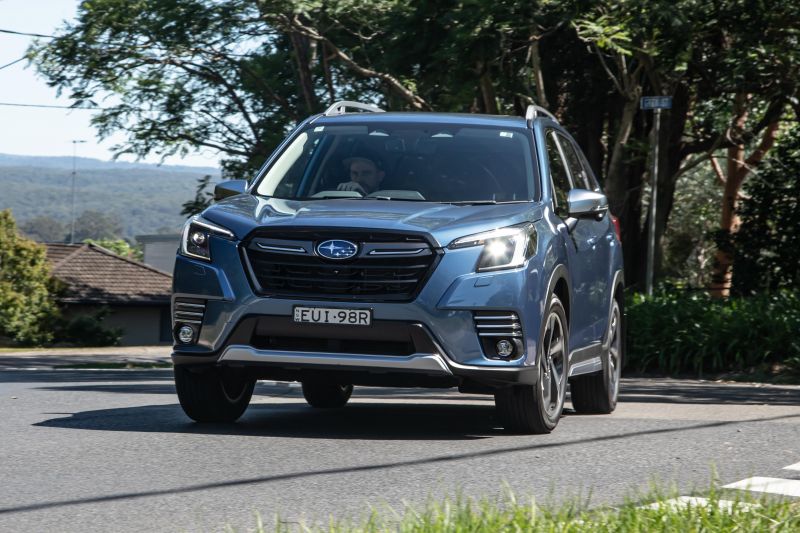
Forester 2.5i-S shown
The difference is in the ride. Because one of the few modifications made by STI are the sports-tuned dampers, you’ll quickly notice how much firmer it feels than a typical Forester.
The results are a mixed bag. On one hand, it now feels sportier and more sure-footed than before, which means it’s more confident in turns. When you’re driving a relatively tall, upright box like the Forester, a more stable feeling under the seat is a welcome improvement.
As tends to be the case with sporty suspension, the downside is that the ride is much less compliant. It’s smooth and well-behaved in the city and on freeways, but on rural roads the benefits are overshadowed by the extra harshness.
You’ll notice how much you and your passengers get thrown around on bumpy roads, and on longer drives it can wear you down more quickly than you may expect.
We’ve spent a lot of time in this review wishing the Forester STI Sport was more like a through-and-through STI model, so we understand why the complaint about stiff suspension may seem a bit contradictory.
The difference with STI models of old is that they offered a complete package. Yes, the suspension was stiff, but they had the performance from the engine and bulletproof six-speed manual transmission to back it up.
We’re not suggesting this Forester should swap out the CVT for a manual or cram in a 200kW-plus motor, but something like that torquier engine offered in Japan would make the STI Sport a more convincing proposition for many Australians.
The final caveat with that is the engine and gearbox combo we get in this car isn’t necessarily bad, it’s just a big part of why we feel Subaru has left a lot to be desired.
Under the bonnet is that naturally aspirated 2.5-litre boxer, which has enough grunt to get the Forester moving – but not much else. Acceleration isn’t outstanding, though it’ll get up to speed in reasonable time with a heavy right foot.
Asking it to accelerate fast reveals some issues. One is that the engine itself is fairly gruff, as it makes a lot of noise as it climbs higher in the rev range.
The same can be said for cold starts, because after taking a moment to crank it’ll fire up into a loud, high-RPM idle until everything gets up to temperature. Despite the boxer DNA, it’s not a terribly nice noise either.
What doesn’t help on the move is the CVT, which forces the engine to rev constantly instead of climbing through the gears like a torque converter auto. Subaru has gone all-in on CVTs, and while they have their benefits and the Japanese brand has mastered them better than some, they unfortunately suck a lot of life from the car.
Subaru attempts to improve the CVT experience by fitting paddle ‘shifters’ to the back of the steering wheel, as well as including a manual mode on the gear selector.
The idea is that the transmission will ‘shift’ through simulated gears created by steps in the CVT’s range of different ratios, like what we get in automatic WRX variants. In reality though, it doesn’t feel like the paddles do much of anything at all.
While it’s nice to have that sporty disposition, you’d be forgiven for thinking you’d somehow missed the paddle after pressing it. The gear number will change on the instrument cluster, but the revs don’t change unless you’re nearing redline.
Thankfully, the CVT behaves just as well as such a transmission should when the gear selector’s in Drive, so it’s better to just leave the car to its own devices.
As for refinement, if you’re coming from an older car, you’ll understandably think the Forester is fairly quiet when on the move.
Road noise on smoother surfaces is kept to a comfortable level, and there’s no wind noise to speak of when you climb up to higher speeds.
But compared to other SUVs right now – like the Kia Sportage and even the cheaper MG HS – it’s noticeably louder.
Road noise has no problem making its way into the cabin on coarse-chip road surfaces, which can dull the interior’s premium aura.
Beyond the off-road specific drive modes for dirt and snow, there is a subtle way you can eke out some more spritely characteristics from the Forester.
On the steering wheel is a button to toggle through the SI-Drive system, which incorporates S and I drive modes for your different driving desires.
I – Intelligent mode – is the standard mode for the Forester, with a focus on fuel-efficiency provided by a smooth throttle response and subtle drivetrain adjustments.
S – Sport mode – provides sharper throttle response with a slightly more aggressive engine mapping and transmission ratio.
You only really notice the difference when pulling away from a standstill or low speeds, as the Forester will zip away before settling back down as the revs climb.
On the inside, the Forester is comfortable but not perfect. The new seats are comfy on longer drives, and the heating function makes it all the more pleasant.
To help you along your way, the driver assist systems generally work reliably. The only struggles we had were with the passive lane-keeping function, which would sometimes get a bit antsy on freeway curves or in large intersections.
The adaptive cruise control with lane-keep assist works well, and keeps the Forester centred in its lane. The car isn’t afraid to crank on extra steering lock for tighter turns either, but there is a limit to how much it’ll do for you.
Otherwise, blind-spot monitoring and other such warning systems work well. When it does throw up a warning, coloured lights will flash ahead of the driver in lieu of a head-up display.
A small complaint relates to the left-side and front-facing cameras, which make it much easier to park and navigate in tight areas but suffer from a drastic drop in quality in low-light conditions. In contrast, the reversing camera is consistently high-definition.
At night, the Forester’s headlights are comfortably bright. Automatic mode does well to turn on the headlights when necessary, but we don’t like how it controls the high-beams.
On multiple occasions with auto lighting enabled I had oncoming cars flash at me to dip my lights, even though I had no indication the high-beams were on. It may be a product of the Forester’s high ride height, which could place the headlights right at the eye level of oncoming cars.
It’s also possible the Forester didn’t dip its lights as it should for oncoming cars, which is a safety concern.
I’m not a fan of automatic high-beam in general, so I find it much easier (and less stressful) to just use the headlights the old-fashioned way and turn them on myself.
To see how the Subaru Forester stacks up against its rivals, use our comparison tool.
The STI Sport is based on the highest-specification non-hybrid Forester currently available, which means you get the full suite of gear and a couple of other tasteful goodies.
2025 Subaru Forester 2.5i highlights:
- 17-inch alloy wheels
- Automatic, active cornering LED headlights
- LED front fog lights
- Rain-sensing wipers
- 6.3-inch multi-function display
- 8.0-inch touchscreen infotainment system
- Wired Apple CarPlay and Android Auto
- DAB+ digital radio
- 6-speaker sound system
- Dual-zone climate control
- Paddle shifters
- Leather-wrapped gear selector
- Leather-wrapped steering wheel
- Black or Platinum/Black fabric upholstery
2.5i-L and Hybrid L add the following:
- Adaptive high-beam
- Rear AEB
- Driver monitoring system
- Front and side cameras
- Heated front seats
- Black premium cloth upholstery (Hybrid L only)
2.5i Premium adds:
- 18-inch alloy wheels
- Power tailgate
- Satellite navigation
- Black or Platinum/Black premium cloth upholstery
- Eight-way power front seats with driver’s memory
2.5i Sport adds:
- Sunroof
- Auto-dimming rear-view mirror
- Orange and gunmetal interior highlights
- Grey/Black water-repellent cloth upholstery
2.5i-S and Hybrid S adds:
- 8-speaker Harman Kardon sound system
- Black leather upholstery
- Platinum/black leather upholstery (2.5i-S only)
STI Sport adds:
- 18-inch ‘high lustre’ dark grey alloy wheels
- STI-tuned front and rear dampers
- Black grille, roof rails, fog light garnish, and front and rear under guards
- Crystal Black mirror caps and side and rear garnishes
- Black badging plus red STI badge
- Nappa leather-accented seats with Black and Bordeaux two-tone colour scheme
- Red interior stitching
- STI instrument cluster logo
The Subaru Forester has received a five-star ANCAP safety rating based on testing conducted in 2019.
Standard safety equipment includes:
- Autonomous emergency braking (AEB)
- Blind-spot monitoring
- Rear cross-traffic alert
- Lane departure warning
- Lane-keep assist
- Lane centring
- Autonomous emergency steering
- Adaptive cruise control
- Reverse camera with washer
- Rear parking sensors
All bar the base 2.5i variant come standard with a facial recognition camera to detect driver drowsiness or distraction, as well as rear AEB and front and side cameras.
| Category | Subaru Forester |
|---|---|
| Adult occupant protection | 94 per cent (36 out of 38) |
| Child occupant protection | 86 per cent (42.6 out of 49) |
| Vulnerable road user protection | 80 per cent (38.5 out of 48) |
| Safety assist | 78 per cent (10.2 out of 13) |
The Subaru Forester is covered by a five-year, unlimited-kilometre warranty, with logbook servicing required every 12 months or 12,500km – whichever comes first.
Subaru also offers either three-year or five-year service plans for all its models, priced at $1387.25 and $2674.64 respectively for non-hybrid Foresters.
| Running costs | Subaru Fosterer |
|---|---|
| Warranty | 5 years, unlimited kilometres |
| Roadside assistance | 12 months |
| Service intervals | 12 months or 12,500km |
| Capped-price servicing | 5 years |
| Average annual service cost | $534.93 |
| Total capped-price service cost | $2674.64 |
To see how the Subaru Forester stacks up against its rivals, use our comparison tool.
As a long-time Subaru fan, I can’t help but feel the Forester STI Sport has missed the mark.
At a time when we no longer have dedicated WRX STI models and instead have to make do with ‘Tuned by STI’ tS variants, we were hoping for a little more from this special-edition Forester.
Regardless of what you think about Subaru and its now-defunct STI models, there’s no arguing they had a unique character about them. The Forester STI Sport brings back a whiff of those icons, but not enough of one to warrant the bright-pink STI badge on the tailgate.
We like the interior, even if Subaru hasn’t gone the full nine yards, and although the new suspension tune is crisper, the minor chassis tickle-up is far from what this car could have been.
It’s not intended to be a full-fat STI, and that’s fine. But when the same car is a much more well-rounded package overseas, at least on paper, the lower-spec Sport would probably be a better buy for someone who wants a hint of performance.
The Forester is a solid car as is, and while it is still a higher-riding SUV, you do benefit from Subaru’s well-established driving dynamics thanks largely to its standard all-wheel drive setup.
Practicality is fantastic, and there’s loads of space for passengers in the cabin. Its button-heavy setup is a refreshing adherence to tradition, and it boasts impressive build quality with no rattles, squeaks, or poorly fitted panels.
But we think the STI additions just aren’t enough. What has been added is definitely nice, but almost all of it is cosmetic and seems like little more than extra optional equipment.
Thanks for the STI suspension tune Subaru, but that turbocharged Japanese engine would have made the Forester STI Sport so much more worthy of its badge.
Interested in buying a Subaru Forester? Get in touch with one of CarExpert’s trusted dealers here.
Click the images for the full gallery
MORE: Everything Subaru Forester

